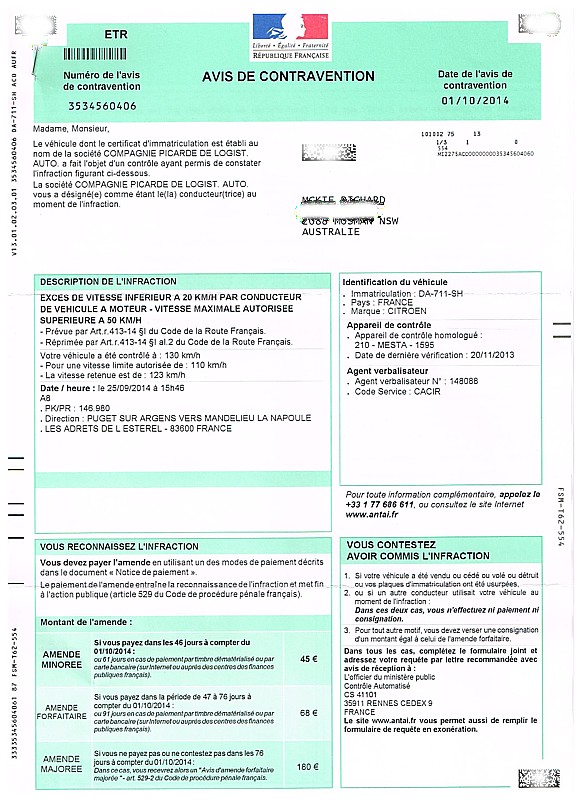Marseille
From Aix we set out to Marseille and promptly wished that we had chosen to stay here instead of messing about at Aix for so long. The old port its defensive fortifications and the spectacular gallery/ museum were wonderful and the old town, the Cathedral and modern port were interesting as well.
Marseille
We spent the best part of the day here and enjoyed a pleasant lunch into the bargain.
Reluctantly we then departed for Nice using the motorway network instead of the local roads and cruise-control set to 150 km/h, as time was now of the essence. No diverting to Cannes or Monaco other such resorts along the way.
Unfortunately, although I slowed for the 110 km/h zones (most of it is 130) it was obviously not slow enough on the day. A fine notice for 45 Euro for doing 130 in a 110 zone appeared in the letterbox a few days after we arrived home.

The fine is for exceeding the limit by less than 50 km/h.
So it would have been the same fine had I been doing 160. Damn!
The good thing is that it was easy to pay on-line.
I might say at no time was ours the fastest car on the road. We were constantly overtaken by others coming up quickly behind, doing well over 160 (the old 100 mph). I guess they know where the cameras are or don't care about being fined.
